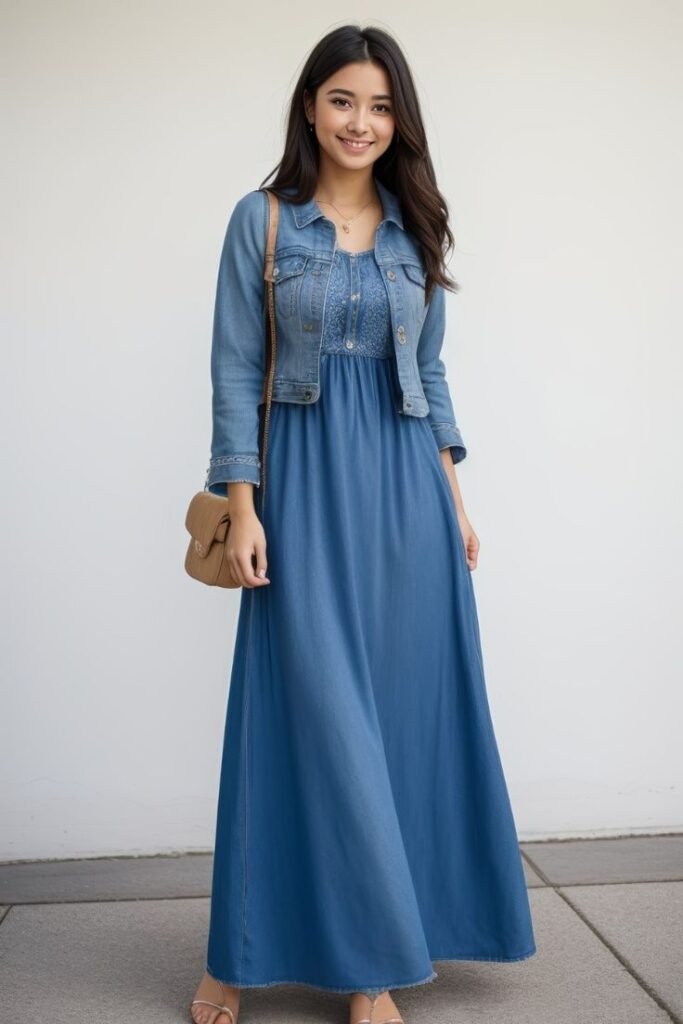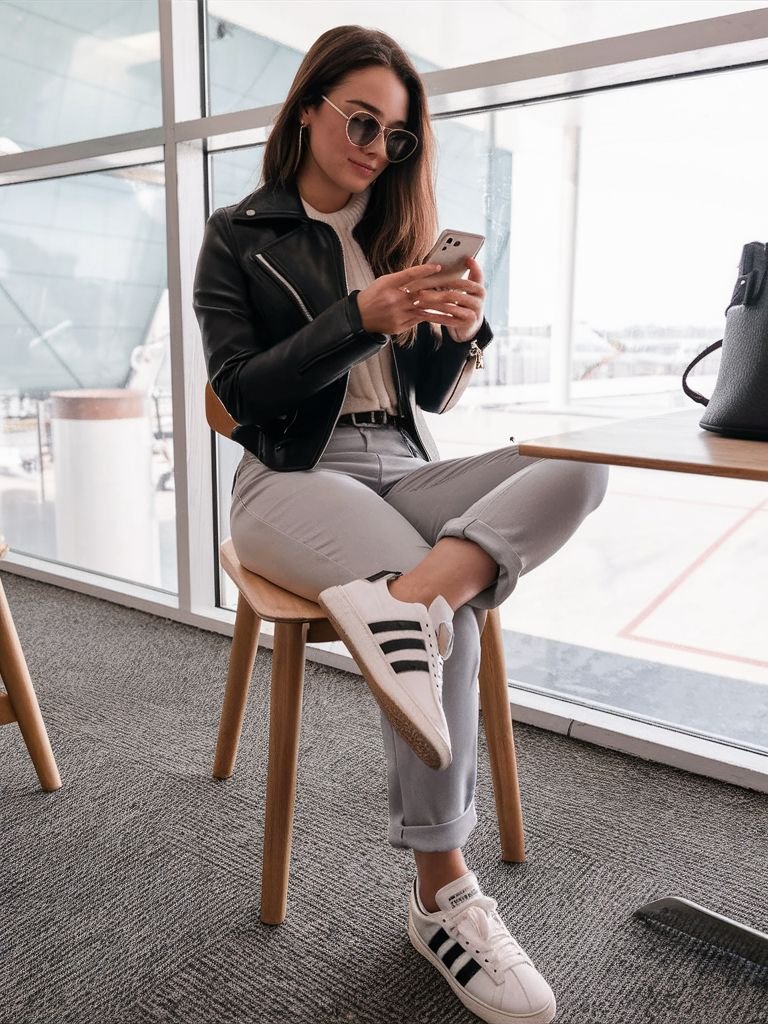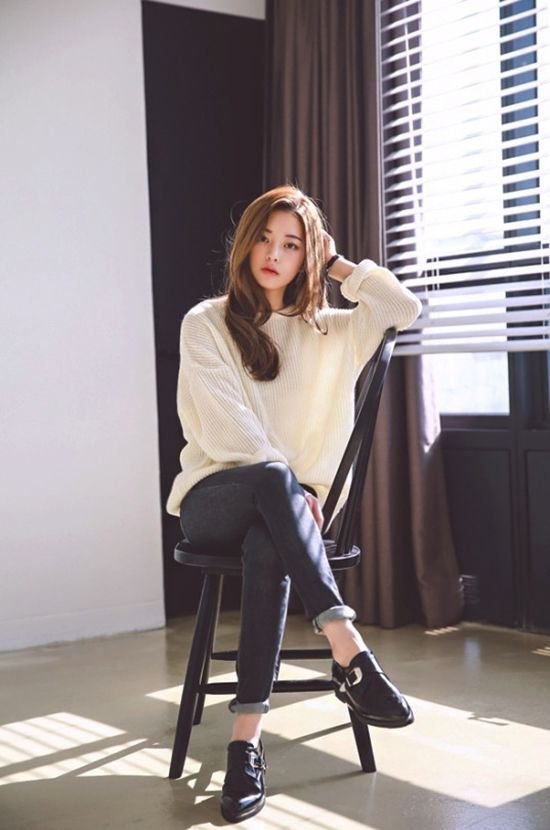Introduction
Quick Outfit Solutions Weather can be unpredictable, often changing within hours and disrupting carefully planned Quick Outfit Solutions. A sunny morning can Quick Outfit Solutions turn into a rainy afternoon, or a warm day may be followed by a sudden cold snap. These changes can create challenges for anyone trying to balance style, comfort, and practicality. Knowing how to adjust your wardrobe quickly and effectively is essential for maintaining both fashion sense and personal comfort. This guide provides practical tips, wardrobe strategies, and accessory hacks to help you handle unexpected weather changes with confidence and style, without compromising your look.
Weather is unpredictable, and one moment the sun is shining while the next, heavy rain or a sudden chill can disrupt your day. For fashion-conscious individuals, unexpected weather changes present a challenge: how to stay stylish while remaining comfortable and protected. Rushing to adjust your wardrobe last minute can lead to poor Quick Outfit Solutions choices, discomfort, or even damage to clothing.
This guide provides practical Quick Outfit Solutions and strategies to prepare for and respond to sudden weather shifts. From layering techniques to versatile wardrobe staples, from Quick Outfit Solutions rain gear hacks to shoes that handle both dry and wet conditions, these solutions ensure you’re ready for any weather without compromising your style. By planning smartly and incorporating adaptable clothing pieces, you can maintain confidence, functionality, and elegance regardless of what the day throws at you.
Whether you’re commuting, attending outdoor events, or running errands, these tips will help you manage weather-related fashion challenges efficiently. By the end of this guide, you will have a toolkit of Quick Outfit Solutions , reliable strategies for turning any unexpected weather into an opportunity to showcase your style and preparedness.

Chapter 1: Understanding Weather-Responsive Fashion
Fashion is not just about aesthetics—it’s also about functionality, especially when dealing with unpredictable weather. Weather-responsive fashion focuses on selecting clothing, fabrics, and accessories that allow you to stay comfortable, protected, and stylish despite sudden changes in temperature, rain, or wind. Understanding how different materials behave in various conditions is key.
Cotton is breathable and ideal for warm weather but absorbs water Quick Outfit Solutions, making it less suitable for sudden rain. Wool retains warmth even when damp, making it perfect for cooler, humid conditions. Synthetic fabrics like polyester or nylon are water-resistant and Quick Outfit Solutions-drying, providing versatility in both rain and heat.
Layering is another essential concept. A combination of a base layer for moisture control, a mid-layer for insulation, and an outer layer for protection allows flexibility in adjusting to temperature changes. Accessories such as scarves, hats, and gloves not only add style but also provide practical protection. Footwear plays a crucial role too—water-resistant shoes or breathable options ensure comfort and safety.
By understanding how fabrics, layers, and accessories interact with weather conditions, you can make informed choices, ensuring that your wardrobe remains adaptable, functional, and fashionable throughout the day.
Fashion is not just about style; it’s about functionality. To dress effectively for unpredictable weather, you must understand how different fabrics, materials, and clothing types interact with temperature, moisture, and wind. For example:
- Cotton is breathable but loses insulation when wet.
- Wool retains warmth even in damp conditions.
- Synthetics like polyester and nylon repel water and dry quickly.
Layering is a key concept in weather-responsive fashion. By combining lightweight base layers, insulating mid-layers, and weatherproof outer layers, you can adapt to sudden temperature changes. Accessories like scarves, hats, and gloves are not just decorative—they provide functional protection against wind and cold.
Weather-responsive fashion also requires attention to footwear. Shoes that are versatile enough to handle rain, snow, or heat reduce the risk of discomfort. Quick-dry socks or water-resistant materials can prevent blisters and keep your feet comfortable during temperature or precipitation shifts.
Planning Quick Outfit Solutions with multi-purpose clothing, neutral colors, and adaptable textures allows you to transition seamlessly between indoor and outdoor environments. Understanding these fundamentals prepares you for the quick Quick Outfit Solutionschanges you may need when facing unexpected weather conditions.
Chapter 2: Layering Techniques for Sudden Temperature Drops
Layering is the most effective strategy for managing sudden temperature changes while staying stylish. It allows you to add or remove clothing quickly, ensuring comfort without compromising your look. The key is to combine functional layers that work together seamlessly.
Base Layer: This is the layer closest to your skin. Choose lightweight, breathable fabrics like cotton, silk, or moisture-wicking synthetics. Base layers regulate body temperature and keep you comfortable during sudden fluctuations. Examples include fitted T-shirts, camisoles, or thermal tops.
Mid-Layer: The mid-layer provides insulation and retains warmth. Materials such as wool, fleece, or knitted sweaters trap heat while remaining flexible. Light cardigans or pullovers are perfect for layering because they can be removed easily indoors when temperatures rise.
Outer Layer: The outer layer protects against wind, rain, or snow. Options include water-resistant jackets, trench coats, or lightweight parkas. Look for pieces that are easy to carry or fold in a bag when not needed.
Accessories: Scarves, hats, and gloves add both warmth and style. Opt for versatile colors and fabrics that complement your Quick Outfit Solutions.
By mastering layering techniques, you can adapt quickly to unexpected drops in temperature, maintain a polished appearance, and remain comfortable throughout the day.
Layering is the most effective way to combat sudden cold or heat fluctuations. A well-layered Quick Outfit Solutionsallows you to add or remove pieces quickly without compromising style. Here’s how to master it:
- Base Layer: This is the layer closest to your skin. Choose breathable fabrics like cotton, silk, or moisture-wicking synthetics. Base layers regulate body temperature and keep you comfortable. Examples: fitted tees, thermal tops, or camisoles.
- Mid-Layer: Provides insulation and warmth. Materials like wool, fleece, or knitted sweaters trap heat while remaining flexible. Mid-layers can be light cardigans or pullovers, easy to remove when indoors.
- Outer Layer: The protective shell against wind, rain, or snow. Look for water-resistant jackets, trench coats, or lightweight parkas. They should be easy to carry or fold if the weather clears suddenly.
- Adjustable Accessories: Scarves, shawls, or wrap-around cardigans provide additional warmth without bulk. Gloves or hats can be added or removed depending on temperature.
Tips for Quick Layering:
- Choose layers with complementary colors for a stylish look.
- Keep lightweight, foldable jackets in your bag for emergencies.
- Opt for versatile mid-layers that can double as standalone pieces indoors.
By mastering layering, you can adapt to unexpected cold snaps or air-conditioned environments without sacrificing elegance or comfort. Layering also adds visual depth, allowing you to appear effortlessly chic even when practicality is the main priority.

Chapter 3: Quick Rain and Storm Solutions
Sudden rain or storms can disrupt your day and ruin carefully chosen Quick Outfit Solutions. Preparing for wet weather in advance ensures you stay comfortable and stylish. Carrying a few essential items and knowing quick fixes can make all the difference.
Portable Umbrella: Always keep a compact, foldable umbrella in your bag. Choose a sturdy frame and neutral or matching colors to complement your Quick Outfit Solutions.
Waterproof Outerwear: A lightweight rain jacket, trench coat, or poncho can be layered over your clothes instantly. Look for breathable, water-resistant materials to avoid overheating while staying dry.
Footwear Protection: Water-resistant shoes or boots prevent discomfort and damage. In emergencies, foldable shoe covers or a spare pair of shoes can help maintain comfort. Avoid suede or fabric shoes that absorb water easily.
Quick-Dry Clothing: Fabrics like polyester or nylon dry faster than cotton, allowing you to continue your day without staying wet for long periods.
Emergency Hacks: Use scarves as temporary hoods, switch heavy shoes for flats or sneakers, and fold jackets into bags when the rain stops.
By incorporating these quick rain and storm Quick Outfit Solutions into your routine, you can protect yourself and your wardrobe while remaining fashionable and confident regardless of the weather.
Sudden rain showers are one of the most common weather challenges. Here’s how to protect yourself quickly without ruining your Quick Outfit Solutions:
- Portable Umbrella: Always carry a compact, foldable umbrella. Choose one with a sturdy frame and neutral or matching colors to complement your Quick Outfit Solutions.
- Waterproof Outerwear: Lightweight rain jackets, trench coats, or waterproof ponchos can be quickly layered over your existing Quick Outfit Solutions. Look for breathable materials to avoid overheating.
- Footwear Protection: Water-resistant shoes or quick-dry footwear prevent discomfort. Avoid suede or fabric shoes prone to water damage. For emergency protection, carry foldable shoe covers.
- Water-Repellent Accessories: Hats, bags, and scarves made with water-resistant materials keep your belongings dry. Consider a small rain cover for handbags or backpacks.
- Quick-Dry Clothing: Fabrics that dry fast (like polyester or nylon blends) allow you to resume your day without staying wet for long.
- Emergency Wardrobe Hacks:
- Fold a scarf into a temporary hood.
- Use a thin rain poncho over work attire.
- Swap heavy shoes for slip-on sneakers or flats stored in your bag.
Being prepared for rain doesn’t require sacrificing style. Neutral tones, classic silhouettes, and multi-functional pieces ensure that you stay polished while remaining dry. Quick rain Quick Outfit Solutions allow you to transition seamlessly from outdoor to indoor spaces without stress.
Chapter 4: Sun and Heat Protection Strategies
Sudden heat waves or intense sunlight can make staying stylish and comfortable a challenge. To manage high temperatures while protecting your skin and maintaining fashion, you need lightweight, breathable clothing and smart accessories.
Lightweight Fabrics: Choose breathable materials like linen, cotton, and chambray. Loose-fitting clothes allow air circulation, keeping you cool while looking chic.
UV-Protective Clothing: Modern fabrics with UV protection help shield your skin from harmful rays. Long-sleeve tops, maxi dresses, or lightweight pants in thin, airy materials provide coverage without overheating.
Hats and Sunglasses: Wide-brimmed hats, caps, and UV-protection sunglasses protect your face, eyes, and hair. These accessories are functional yet stylish, complementing almost any Quick Outfit Solutions.
Unexpected heat or strong sunlight can also create fashion challenges. Protect yourself while maintaining style with these strategies:
- Lightweight Fabrics: Choose breathable materials like linen, cotton, or chambray to prevent overheating. Loose-fitting clothing allows airflow and comfort.
- UV-Protection Clothing: Some modern fabrics are designed to block UV rays. Long-sleeve tops and dresses with lightweight material can protect skin while staying cool.
- Hats and Sunglasses: Wide-brimmed hats, caps, and sunglasses are both functional and stylish. They protect your face, eyes, and hair from sun damage.
- Layer Adjustment: Keep a lightweight cardigan or scarf in your bag to cover up in air-conditioned indoor environments without overheating outdoors.
- Footwear Choices: Breathable shoes or sandals prevent sweating and discomfort. Avoid dark, heavy shoes that retain heat.
- Accessories for Comfort: Handheld fans, foldable parasols, or moisture-wicking scarves add an extra layer of protection and elegance.
By preparing for heat and sunlight, you maintain comfort and protect your health while staying fashionable. Prioritizing versatile, lightweight clothing ensures that sudden sunny conditions don’t disrupt your day.
Chapter 5: Quick Transitions Between Seasons
Seasonal changes often happen unexpectedly, requiring quick adjustments to your wardrobe. Being prepared with versatile clothing allows you to remain comfortable, stylish, and functional throughout the year.
Spring to Summer: Light cardigans, denim shirts, or thin jackets can be layered over summer Quick Outfit Solutionsfor cooler mornings or sudden rain showers. Breathable fabrics like cotton and linen help maintain comfort as temperatures rise.
Summer to Autumn: Transition with scarves, light sweaters, or long-sleeve tops for cooler mornings and evenings. Swap sandals for closed shoes or ankle boots to adapt to shifting temperatures.
Autumn to Winter: Add insulating layers such as wool coats, thermal leggings, and knit hats. Water-resistant boots and gloves protect against rain or snow. Layering ensures warmth while preserving a polished appearance.
Seasonal changes can happen abruptly, requiring swift wardrobe adaptations. Here’s how to manage transitions:
- Spring to Summer: Keep light cardigans, thin jackets, or denim shirts to layer over summer dresses or tees. Rollable outer layers are convenient to carry.
- Summer to Autumn: Swap light footwear for boots or closed shoes. Incorporate scarves and thin sweaters to adjust for cooler mornings or evenings.
- Autumn to Winter: Add insulating layers like thermal leggings, wool coats, and knit hats. Keep waterproof boots handy for snow or rain.
- Winter to Spring: Gradually remove heavy layers, keeping transitional pieces like trench coats or mid-weight jackets to manage fluctuating temperatures.
Practical Tips:
- Stick to neutral or complementary colors to mix layers easily.
- Choose versatile pieces that work across seasons.
- Always keep a small bag or backpack with emergency layers, accessories, and footwear.
Seasonal adaptability ensures that you are ready for sudden drops or rises in temperature while maintaining a polished, coordinated look.

Chapter 6: Accessories for Rapid Quick Outfit SolutionsAdjustments
Accessories play a crucial role in adapting to sudden weather changes:
- Scarves & Shawls: Can provide warmth or cover for sun protection. Choose lightweight, multi-functional fabrics.
- Hats & Caps: Offer shade from sun or protection against rain. Foldable hats can be stored in bags.
- Gloves & Mittens: Keep compact gloves in your bag for cold snaps.
- Bags & Backpack Covers: Protect personal items from rain with waterproof covers or foldable bags.
- Footwear Alternatives: Carry foldable flats or sneakers to switch quickly from heels or leather shoes that aren’t weather-resistant.
These small additions allow for rapid, stylish adaptations without needing a full Quick Outfit Solutions
Chapter 7: Emergency Quick Outfit Solutions Kit for Daily Carry
Creating a mini emergency kit in your bag ensures readiness for sudden weather changes:
- Foldable rain jacket or poncho
- Compact umbrella
- Scarf or pashmina
- Change of shoes or shoe covers
- Sunglasses and sunblock
- Small portable fan for heat
This kit allows you to respond instantly, protecting comfort, clothing, and style while avoiding stress or rushed wardrobe decisions.
Chapter 8: Footwear Quick Outfit Solutions for Unpredictable Weather
Footwear is often the first victim of unexpected weather. Quick Outfit Solutions include:
- Waterproof boots or sneakers
- Quick Outfit Solutions-dry shoes and socks
- Foldable flats for sudden rain
- Shoe covers for muddy conditions
- Breathable shoes for heat
Choosing versatile footwear ensures mobility, comfort, and style under changing conditions.
Chapter 9: Wardrobe Planning and Maintenance
- Maintain multi-season staples like trench coats, cardigans, and neutral pants.
- Use fabrics suited for variable weather: wool, cotton blends, polyester.
- Keep emergency items stocked in bag or car.
- Rotate clothing to prevent wear from sudden exposure to rain or sun.
Proactive planning reduces stress and ensures rapid response to unpredictable weather.
Chapter 10: Real-Life Examples and Case Studies
Include scenarios like:
- Commuting during a sudden rainstorm and staying dry using a foldable raincoat and umbrella.
- Transitioning from hot outdoor markets to cold air-conditioned offices using layering and scarves.
- Managing snow or sleet while remaining stylish with waterproof boots, gloves, and insulated coats.
These practical examples demonstrate how strategies work in daily life.
Conclusion
Unexpected weather doesn’t have to ruin your style or comfort. By mastering layering techniques, investing in versatile clothing, and carrying essential accessories, you can adapt to sudden changes efficiently. Planning for rain, sun, temperature shifts, and seasonal transitions ensures that your wardrobe is flexible, functional, and stylish.
With portable emergency kits, weather-appropriate footwear, and adaptable fabrics, daily fashion challenges become manageable. By understanding fabrics, layering principles, and accessory utility, you can respond Quick Outfit Solutions and maintain a polished look. These strategies reduce stress, enhance confidence, and allow you to enjoy your day regardless of weather fluctuations.
By integrating these tips into your daily routine, you’ll be prepared for any unexpected weather, turning challenges into opportunities to showcase practical, stylish, and weather-ready fashion sense.
Related Post: 7 Top Causes of Google Maps Not Working and How to Fix Them

